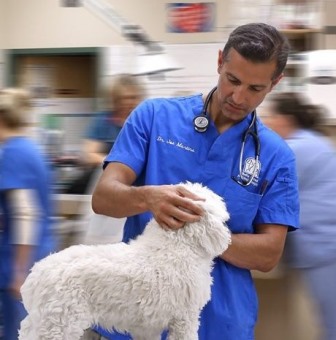A client of mine who has two cats comes in every year faithfully for their annual wellness exam. This annual exam includes a weight check, looking at the teeth, listening to the heart and chest, and sometimes annual bloodwork. All this is along with conversations over any concerns, and updating their cats’ vaccines.
She called to schedule their appointment, but she said they didn’t need the rabies shots this year because they got it done for free at the January town clinic this year, just a few weeks prior to this visit.
“Oh no!” I immediately thought, because it was a “cat” at the town rabies clinic. This is scary on multiple levels.

If their pet would have been a dog, then a three-year town rabies vaccine is fine, but because it’s a cat, there is a risk that a free rabies three-year shot from the town clinic can cause cancer in some cats. For the last 50 years, we have used this three-year rabies vaccines in cats, dogs, horses, sheep, goats, pigs, and the list goes on.
About 17 years ago, in cats and only cats, we began noticing that the three-year rabies vaccine can induce a tumor at or near the injection site anywhere from two months to two years after it was given. These tumors were incredibly aggressive and used to be surgically removed by the pet’s veterinarian.
Many times these tumors were so aggressive that they would come back in the same area and usually in deeper tissue, starting to attach to the pet’s muscles and nerves. This would normally prompt the owner to come back to the veterinarian. Then the veterinarian would send them to board veterinary surgeons which were more expensive and more aggressive in the removal of these tumors. Many of these tumors, unfollowed, would still come back in a relatively short amount of time. They all inevitably caused extra pain and discomfort to the pet, and could eventually be fatal to the pet.
Other things that were done to try and slow down regrowth of these tumors and give these animals more time were to send these cats to specialists for second and third opinions. The newest treatment recommendations back then was to not decide on a quick surgery first, but to see a specialist. They started recommending that these pets get a biopsy and see a specialist for radiation to kill every microscopic cell possible to decrease the chance of it coming back, or at least the plan was to try and get a cure to decrease the time interval as well.

So as a young Veterinarian starting a career 27 years ago, the Rabies vaccination was very important to protect all pets and all animals. The Coincidence was that this life-saving vaccine that was designed to save pets was actually now a cause for alarm. Back in those days, no one really knew that this was going on for a while because pets and humans got all kinds of skin and under the skin cancer.
Therefore, a tumor secondary to a rabies vaccine was not on anyone’s radar. Skin and subcutaneous tumors were common, and some didn’t really grow or change for months or years. Some could be quite aggressive and grow at the injection site. Other tumors found could potentially be microscopically spreading to other organs or the chest, and we might not even know it would hurt these patients later. This is why we don’t watch a tumor for an entire year before bringing it for a veterinarian’s opinion.
I practiced for the first five years and removed many tumors from both dogs and cats. Most were not this aggressive feline cancer, but I did have a few cases of a fibro sarcoma that I removed and diagnosed with a biopsy.
Those first five years I would annually do the free Rabies Clinic for the municipality in which I lived in order to help out the community and to give free vaccinations for dogs and cats. It was a service that I thought not only protected pets, but also humans. It was really appreciated by many people. I donated my time, typically Saturday morning for free to help the community and their pets.
As more and more veterinarians were sending tumors out for histopathology and more and more similar experiences were being encountered, studies with results came out. University level studies finally realized that the Rabies three-year vaccine was inducing a tumor at the injection site in cats and only cats.
The rate of this tumor at the injection site with the rabies three-year vaccine was 1 in 10 to 20,000 cats. So we at Belle Mead Animal Hospital only give the safe feline rabies one-year vaccine that is specifically designed for cats and only cats.
Town clinics that are run by the state will not go out of their way to buy a more expensive rabies vaccine specifically designed for cats that technically only last a year. That’s fine in a few cases where you may have a farm cat or a feral cat who may never go to a veterinarian again. Their chance of getting rabies is a lot higher than not vaccinating them, so the three-year vaccine may be best in that case. However, in my opinion, for mostly indoor pet cats, the vaccine of choice is the one-year rabies vaccine designed only for cats you can only get from a veterinarian, not a town municipality. Sometimes you get what you pay for, and in this case, “free” is not good for cats when it comes to rabies vaccine clinics.
So if you want to protect cats, then make sure that they go to their veterinarian for rabies vaccines and not rabies clinics.
Dr. Joseph Martins, DVM, Belle Mead Animal Hospital



